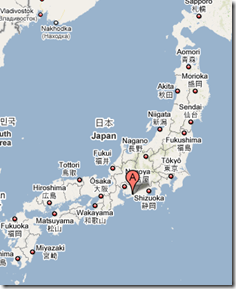# 2838

Toyohashi, Aichi Prefecture
This report has just come over the wires, and there isn't a lot of detail available yet.
From the Kyodo News.
Highly pathogenic H7 bird flu virus detected in Aichi Pref.
NAGOYA, Feb. 27 KYODO
The highly pathogenic H7 bird flu virus has been detected in quails in Toyohashi, Aichi Prefecture, the prefectural government said Friday.
The quails were being kept by a farm family in the city, according to the local authority.
==Kyodo
While we worry most about highly pathogenic H5N1, HPAI (Highly Pathogenic Avian Influenza) H7 has caused severe damage to poultry holdings in a number of countries.
Millions of birds were culled in Pakistan in between 1997 and 2003 due to the H7N3 virus, and 30 million birds were culled in the Netherlands in 2003 due to an outbreak of H7N7.
Chart from CIDRAP Avian Influenza (Bird Flu): Agricultural and Wildlife Considerations
While we worry less about the impact of H7 viruses on human health than we do the H5 virus, human infections have been recorded. They have generally been mild.
This from CIDRAP's Avian Influenza (Bird Flu): Implications for Human Disease on the 2003 Netherlands outbreak.
During an outbreak of H7N7 avian influenza in poultry, infection spread to poultry workers and their families in the area (see References: Fouchier 2004, Koopmans 2004, Stegeman 2004). Most patients had conjunctivitis, and several complained of influenza-like illness. The death occurred in a 57-year-old veterinarian. Subsequent serologic testing demonstrated that additional case-patients had asymptomatic infection.
More recently, 4 people in Wales contracted H7N2 during an outbreak on a poultry farm in 2007. There were no fatalities.
Hopefully we'll get more detail on this discovery of HPAI H7 in Japan over the next few days.
